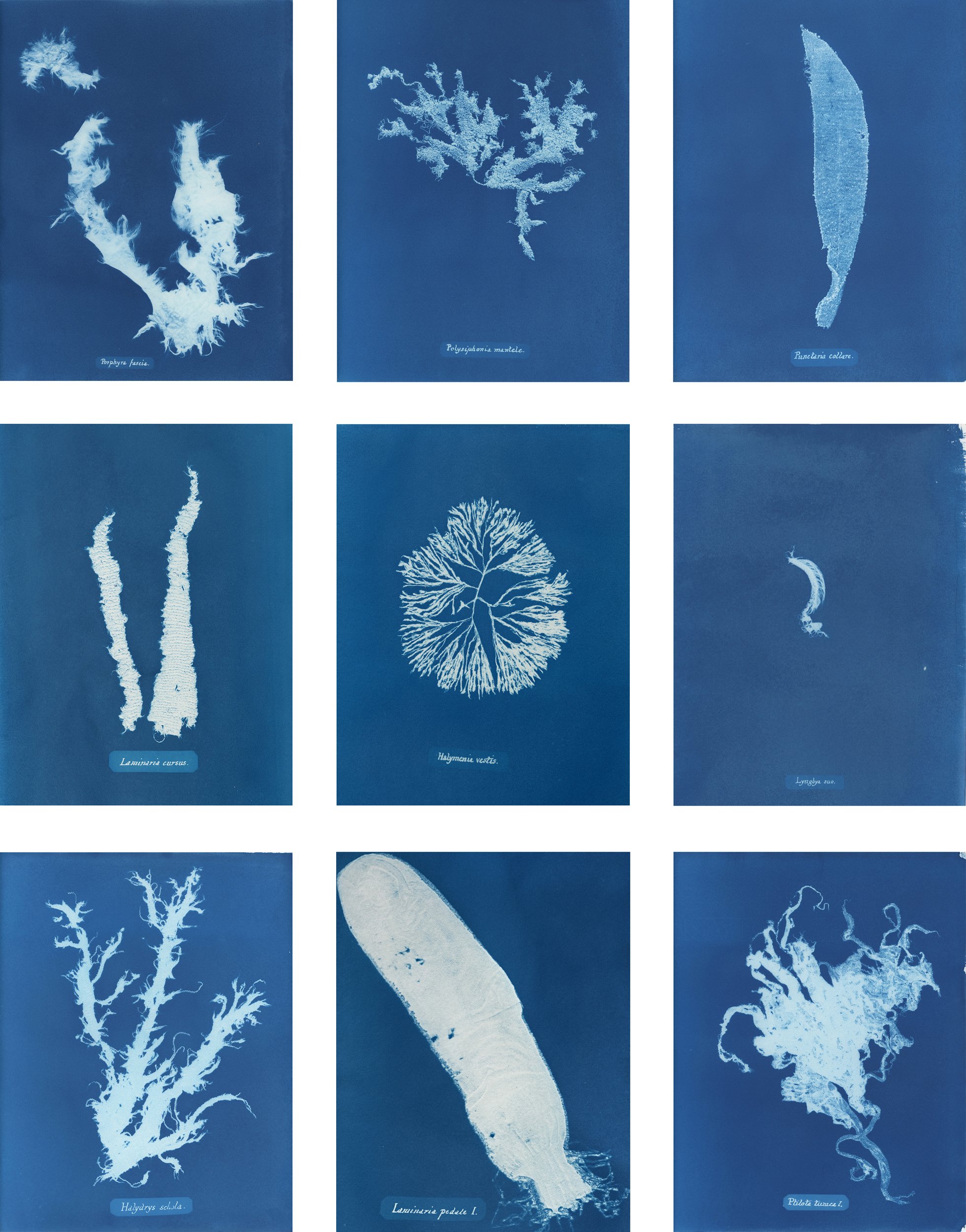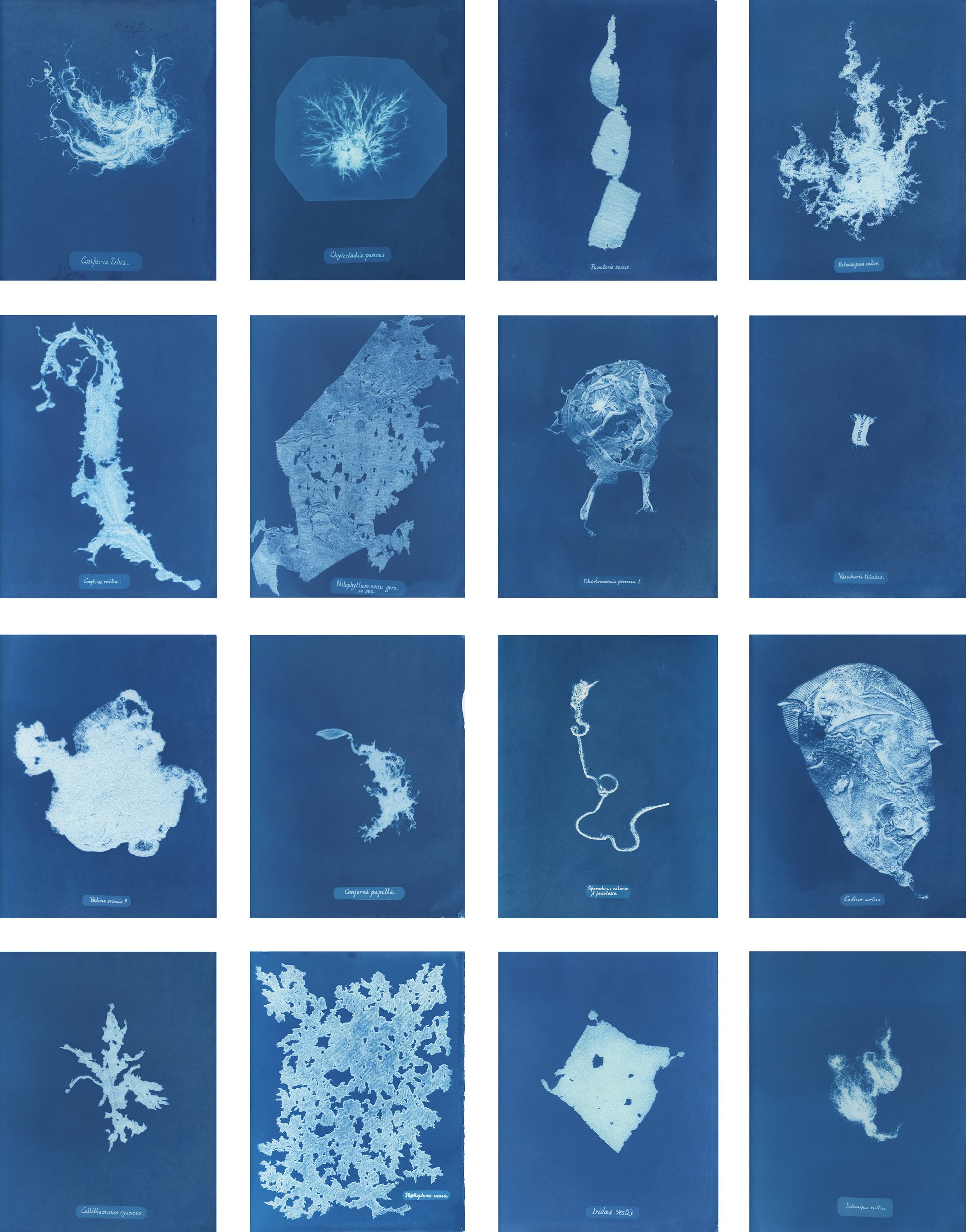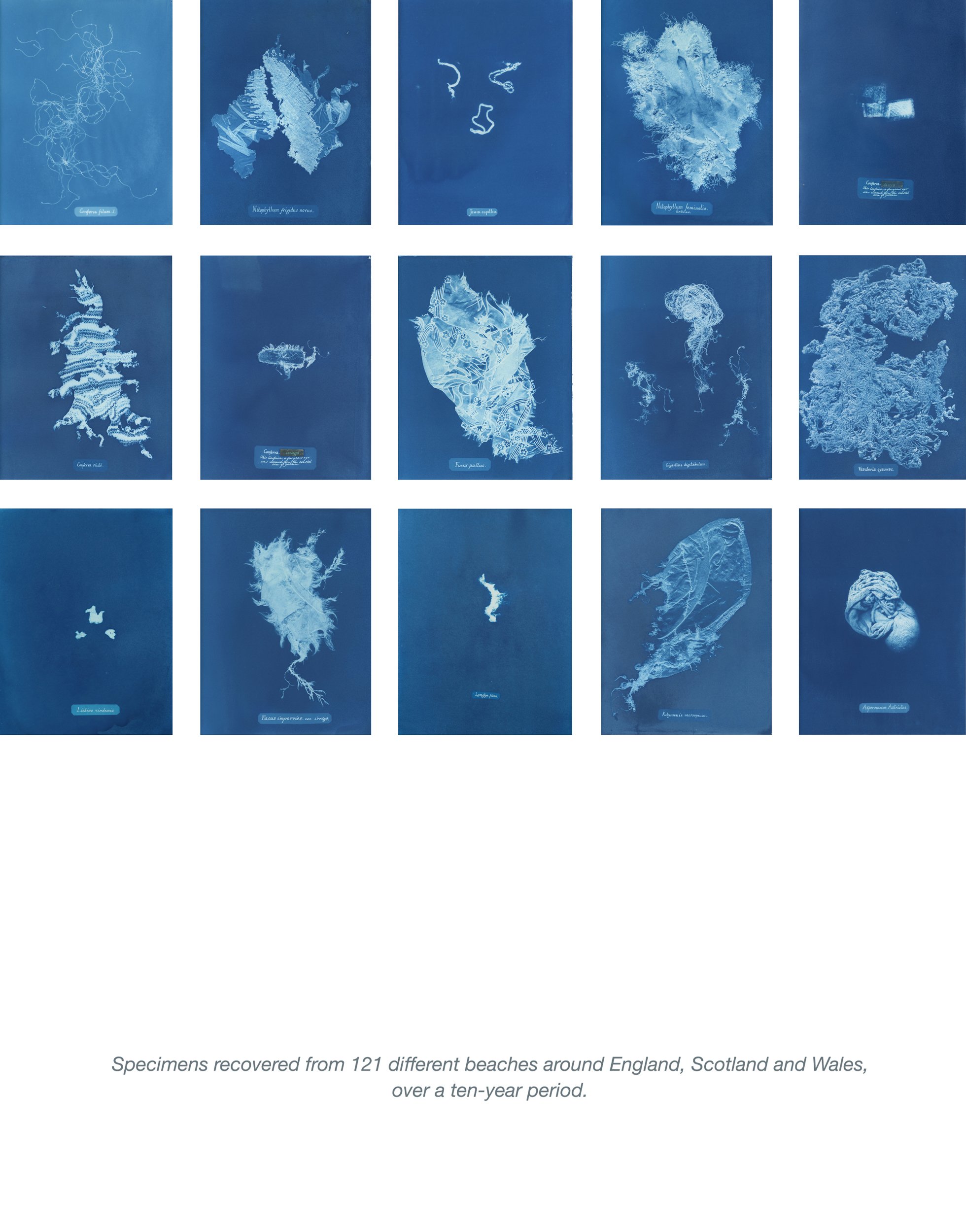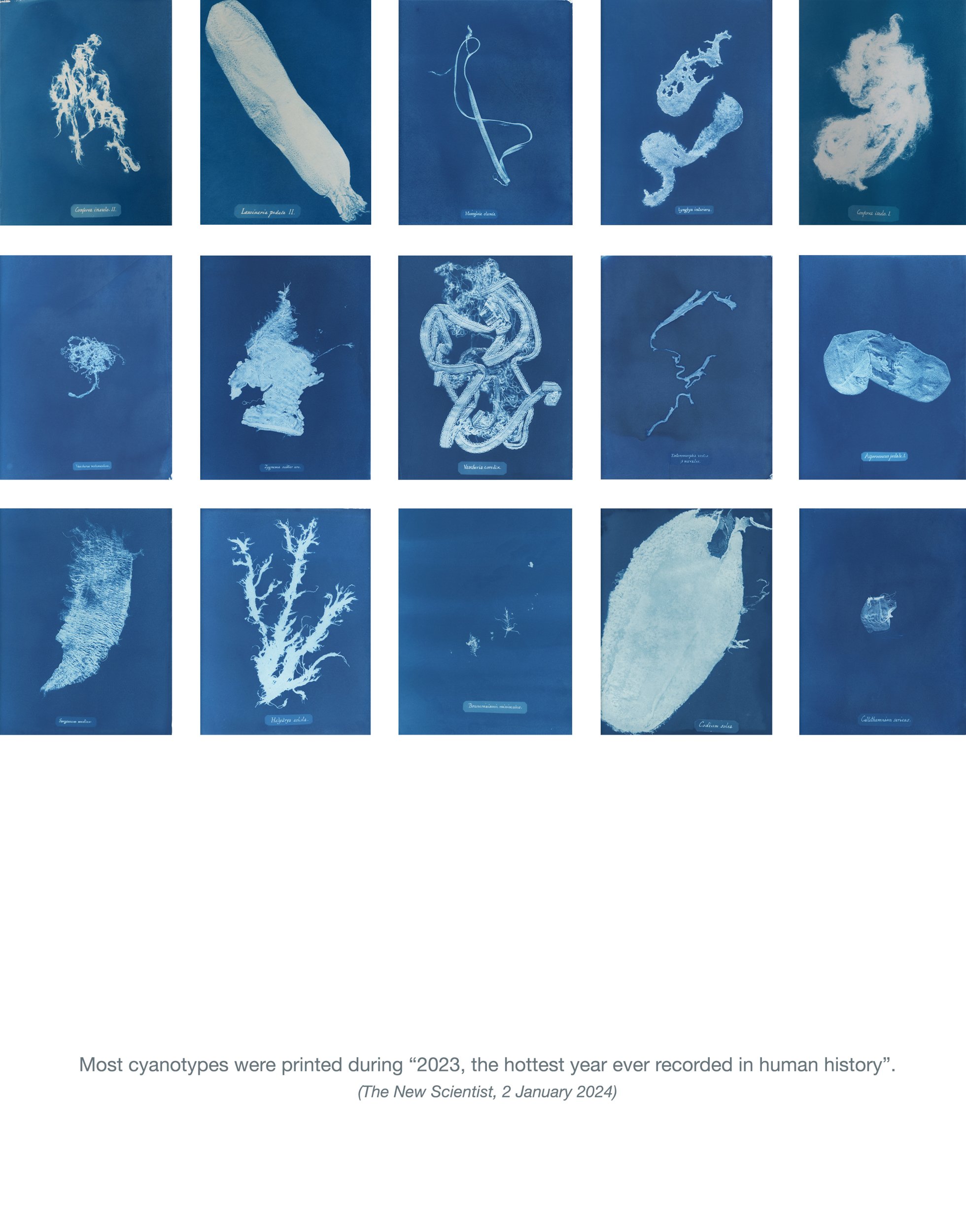PRINTS
Each cyanotype print is unique, from the coating of the paper, to the exposure and development - all combine to make a final print that cannot be repeated. Even the paper itself is part of the chemistry, at over one hundred and twenty-five years old, some sheets expose differently due to imperfections of dirt, a dink in the paper, discolouring or foxing. However all sheets are included as an honest account of the life of this incredible paper.
The initial intention was to emulate the prints of Anna Atkins, duplicating marks caused by application and exposure, but also to replicate imperfections from handling over the years. These intentional imperfections gave license to new additional marks created during the process, making Barker’s work her own. Text and captions reflect the originals, which are sometimes faded, blurred or obscured.
Atkins used Herschel’s original cyanotype formula for her prints, and whilst this has been used as the basis, additional elements have been added to create a unique solution for this new work. Most prints have been created by exposing the coated paper to ‘artificial’ UV light, relating to the ‘artificial’ synthetic plastic specimens portrayed. Some prints created in the ‘Yorkshire’ sun were exposed on some of the hottest days ever recorded in 2022, at 40.3C (104.5°F), and in 2023 during the hottest year on record. This further reinforces the notion of ‘imperfection’ through climate change, not evident when Atkins created her original ‘natural’ exposures in the Kent sun in the 1840’s.































